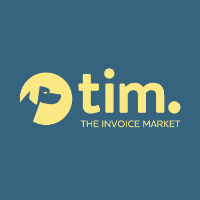
The Invoice Market sees significant changes in the industry as having both positive and negative impacts
Peer-to-peer alternative financier, The Invoice Market (tim), reached a notable milestone recently, celebrating two years since it helped its first business client cash flow a batch of invoices to the value of $968,340. As one of the earlier entrants to offer flexible invoice funding, the company has seen significant changes, both positive and negative, in the industry over this time.
“From funding our first client, a fresh produce supplier, tim has built a strong business supporting SMEs where the traditional funders are unwilling or unable to do so. And, in remaining focused on our core objective, we have now provided funding to over 100 Australian businesses, making tim a market leader in P2P financing for flexible invoice funding,” tim Managing Director, Angus Sedgwick said.
“Pleasingly, it is not just the overall volume of business we’ve funded in that time, which stands at $140 million, that has grown,” Sedgwick added.
“All our lead business indicators prove how well we’ve been supporting clients, as they face longer payment terms on the invoices they issue. As examples, our average invoice value; number of clients; and client retention rates; have shown consecutive year-on-year growth plus, our loss ratios remain well below our forecast loss provisions.”
Sedgwick also reflected on the significant changes in the industry and the competitive landscape that had occurred over the period. As is typical of emerging industries, there has been considerable movement in the structure with an increasing number of new entrants, although many are yet to generate significant sales, some early consolidation of funders, and the development of lead capture portals similar to mortgage comparison sites.
Many of these changes have been positive as they are helping to build an awareness of the alternative and more flexible financing options available for businesses.
“Undoubtedly, the main positive for businesses is that they are no longer restricted to on balance sheet funding, which many do not want or are unable to get. We can attribute tim’s growth in funding levels to three key areas – an increased awareness by businesses; our work with traditional funders to set up joint referral processes that ultimately enhance client experience; and acting as an incubator for clients currently falling outside normal banking criteria,” Sedgwick explained.
Worryingly however, there is ‘market talk’ that some local participants are following the trends seen in the UK and US markets by being less than diligent in their credit underwriting potentially resulting in higher than expected loss ratios.
“Typically, if funders are experiencing higher than expected loss ratios it may be a reflection of a heavy reliance on algorithmic credit underwriting processes. They may allow for higher volume of transactions but typically are not intuitive or robust enough to accurately assess the quality of transactions in the SME space, particularly where the business is a start-up,” explained Sedgwick. “In contrast, by ‘adding back’ an element of human assessment to both the credit assessment and invoice verification, tim has maintained a loss ratio of less than 0.4% of the total book over the past two years. At the same time, we have been able to offer very competitive funding rates to our clients.”

